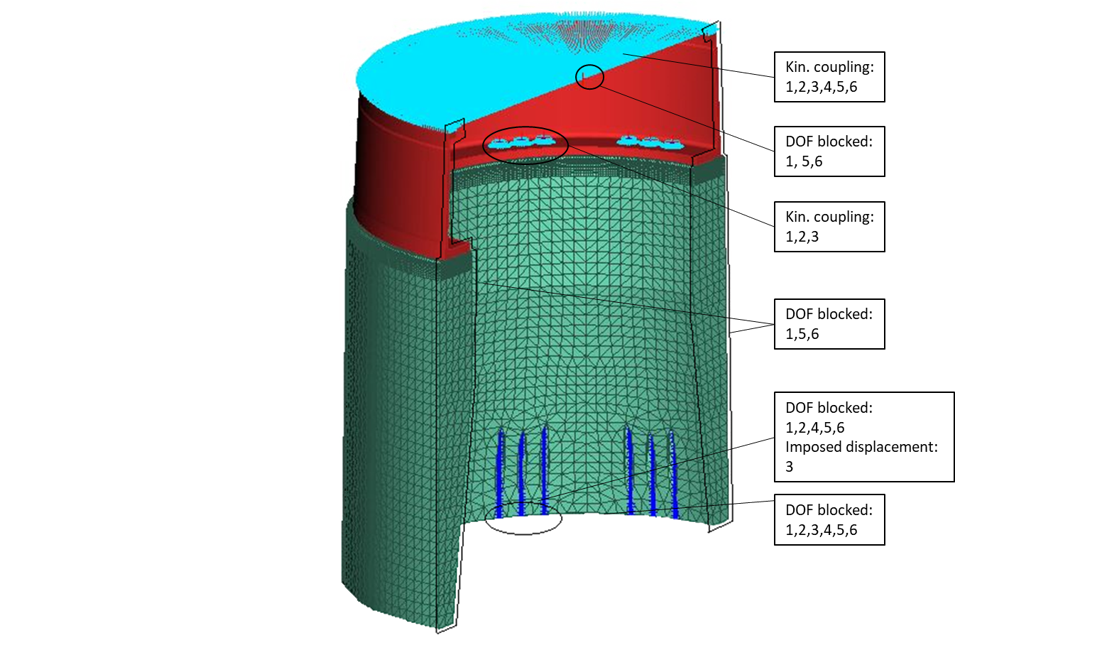Wind turbine tower and foundation design Peer review & RCA
Timeline
2017-2023Sector
Civil-WindScope
Wind turbine tower and foundations design peer review and root cause analysisBACKGROUND
SOLUTE has extensive experience in conducting a peer review of the design and pre-design of wind turbine towers and foundations as well as in root cause analysis of existing structural components.
For this, we must carefully evaluate the data facilitated by the client and check that the component has been designed based on current regulations, and that it is also compliant with the quality standards that are currently defined.
With this, the intent is to evaluate the exact or estimated measurements of the built installation, review the drawings and provide suggestions or areas for improvement to optimise the solution, carrying out modifications to the construction if necessary.
SOLUTE is qualified to carry out a peer review of the design and pre-design of wind turbine towers and foundations as well as in carrying out root cause analysis of existing structural components.
To carry out both tasks, SOLUTE conducts a thorough study of the information supplied by the customer and verifies, on the one hand, that the structural element has been designed according to the current regulation and on the other hand, that the component operates in compliance with current quality standards.
Therefore, these skills require a multidisciplinary team with an in-depth knowledge to verify that the proposal put forward by the customer is suitable in terms of the current regulation.
RESULTS
With the application of these capabilities by part of SOLUTE, the exact or approximate measurements of the structure are checked and once the drawings are delivered, the customer is advised in terms of adapting the solution and/or making modifications to the construction.
EXPERIENCE
Since 2017, SOLUTE has completed several peer review projects for external customers as well as root cause analysis of different components framed in wind turbine towers and foundations.
This capability is of special interest to engineering consulting firms engaged in the design of wind turbine foundations and towers, construction companies that require a review of said design, operators that have detected discrepancies during the process of operating and maintaining wind parks and any other professional profile involved in these tasks.
SOLUTE has a team of engineers with a strong knowledge in the calculation of concrete sections, in geotechnics, in the creation of Finite Elements models (FEM), automatic post-processing of results and with experience in foundation calculation and in the preparation of construction drawings.
METHODOLOGY
To apply these skills, first we must analyse the information sent by the customer such as geotechnic data, the loads, or the geometric requirements of the structural elements. Then we carry out a preliminary study of the size and if possible, the measurements are optimised. Also required to carry out are geotechnic checks, Finite Elements Models (FEM) approaches, an evaluation of the reinforcement and the concrete sections, and checks related with the connections such as the bolt cage, ferrule or post-tensioning strand tendons.
Then, the pertinent plans are drawn up as well as the results report to be sent to the customer. The deliverables are diverse and meet the requirements in each case.
According to regulations and design guides such as IEC61400, Eurocodes, DNV and others, we carry out the peer review and root cause analysis of wind turbine towers and foundations. The tools we normally use for developing these projects are Excel, Visual Basic, Ansys, Sap2000 and Fagus.
SOLUTE has a team of engineers with a strong knowledge in the calculation of concrete sections, in geotechnics, in the creation of Finite Elements models (FEM), automatic post-processing of results and with experience in foundation calculation and in the preparation of construction drawings.
VR
Digital Twins
Virtual replicas of a specific model that reflect their asset with a high degree of accuracy and incorporate data in real time, collected through sensors, to evaluate the performance and implement improvements that can be transferred to the original physical asset they represent.
Software
Backend
Backend development is the part of an application that manages the information provided by the user and which controls the processes that manipulate this information to obtain the required results.
